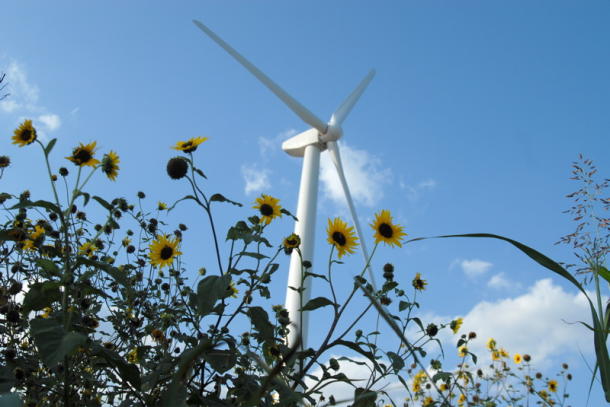Energizing China and U.S.

Past wars have been fought over many things: power, land, wealth, religion, food. Right now we’re seeing a non-violent battle to dominate the world’s renewable energy industry. Not only does this obviate the need to control the remaining oil reserves in the Middle East, it could portend the economic and power balance for the rest of this young century.
CHINA #1
China is now the #1 maker of hardware for the two most widespread sources of renewable energy: wind and solar. Another key element of the post-fossil-fuel world will be energy storage. Here, also, China is a major player.
In addition to heavy government support for wind and solar components in China, the country is moving into making nuclear power plant parts as well. Even companies based elsewhere are building factories to produce renewable energy equipment in China which promises to be the world’s #1 market for new energy hardware. China has very little oil and insufficient coal to support its economy right now. As growth continues, China will become the world’s #1 energy consumer and thus the government there is pushing for more renewable energy production for both home and export markets.
The U.S. is not standing still, it’s rapidly expanding its renewable energy capacity. Wind power generation capacity has grown at 39% for each of the past five years, recession or not. The world’s largest wind farm is right now in Texas. But probably not for long as China pushes hard for an across-the-broad lead.
Here's the CNET story on the opening of the Roscoe, Texas, Wind Farm last fall. 
FEDS GREENING
One example of what the feds are doing can be found in Portland, Oregon, one of America’s greener cities. The main federal building there will be shaded on the south side by a living curtain. CARBON TRADING, AMERICAN STYLE
It look highly unlikely that this Congress will agree on any kind of new national energy legislation. So many of the carbon trading schemes that have been championed by various groups are going to be tried on regional or voluntary bases. Here’s the website of the Regional Greenhouse Gas Initiative.
It operates in ten states. It is a cap and trade system for electricity generators in the participating states.
Across the woodlands of America, another quiet change. I’m not talking hotter temps, but voluntary carbon credit market growth. Small woodland owners in Oregon are now able to sell their forests’ carbon storage capacity. The American Forest Foundation and its allies have been pushing to get federal statutory support for forests as carbon sinks. With that looking unlikely the grassroots programs may move ahead anyway.
ENERGY RESEARCH?
It looks likely that research on energy will continue to grow in the U.S. Despite plans for overall belt-tightening by the Obama Administration, one source says there’ll be a 6% increase in money for research in the proposed budget.
WHERE ARE THE JOBS?
One estimate is that Silicon Valley is America’s leader in cleantech jobs with about 7-thousand. Solar and smart grid are two areas where there are numerous Silicon Valley start-ups. That’s in response to the current federal estimate of a 30% increase in U.S. electricity demand by 2030.